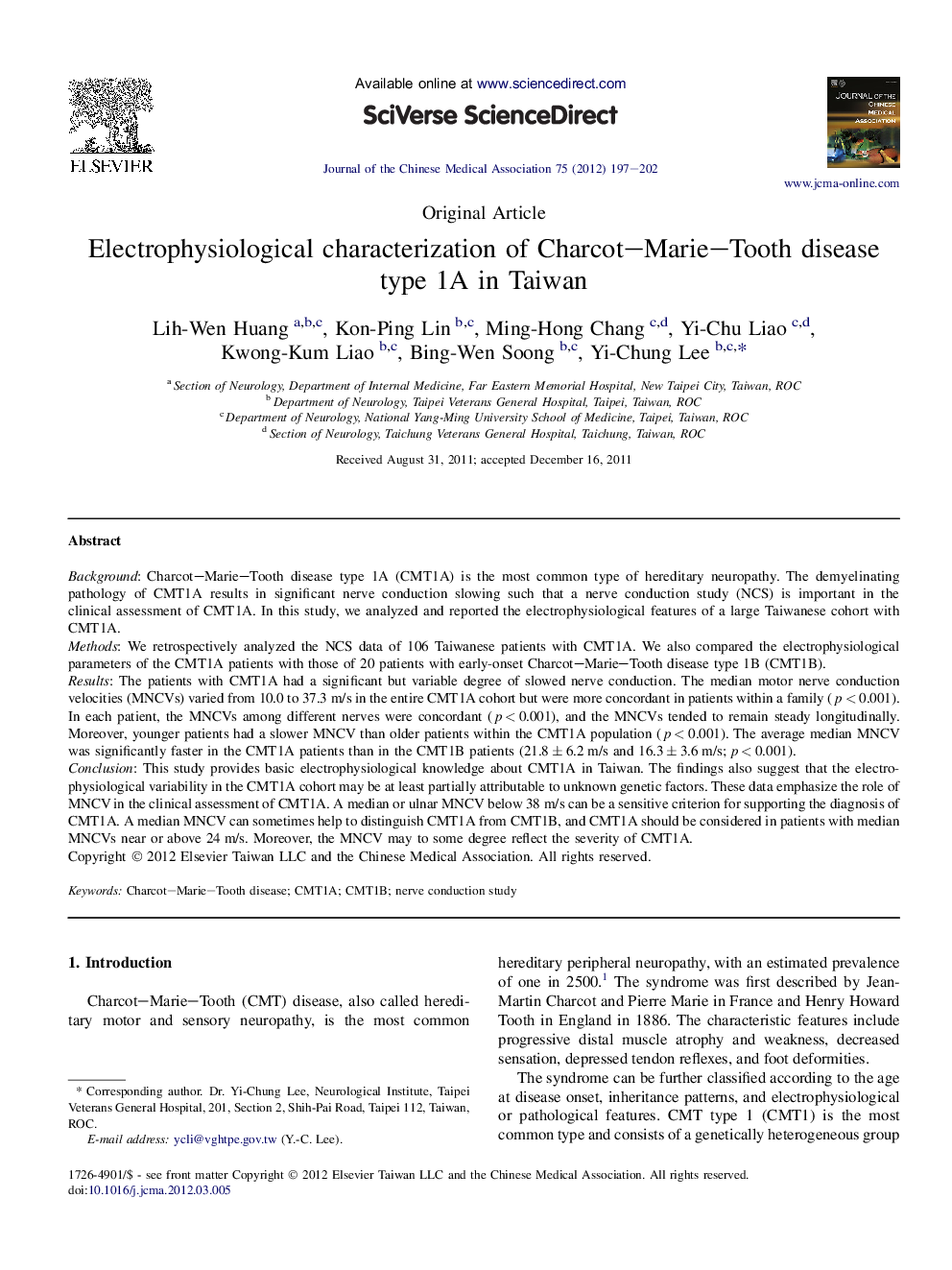| کد مقاله | کد نشریه | سال انتشار | مقاله انگلیسی | نسخه تمام متن |
|---|---|---|---|---|
| 3476268 | 1233250 | 2012 | 6 صفحه PDF | دانلود رایگان |

BackgroundCharcot–Marie–Tooth disease type 1A (CMT1A) is the most common type of hereditary neuropathy. The demyelinating pathology of CMT1A results in significant nerve conduction slowing such that a nerve conduction study (NCS) is important in the clinical assessment of CMT1A. In this study, we analyzed and reported the electrophysiological features of a large Taiwanese cohort with CMT1A.MethodsWe retrospectively analyzed the NCS data of 106 Taiwanese patients with CMT1A. We also compared the electrophysiological parameters of the CMT1A patients with those of 20 patients with early-onset Charcot–Marie–Tooth disease type 1B (CMT1B).ResultsThe patients with CMT1A had a significant but variable degree of slowed nerve conduction. The median motor nerve conduction velocities (MNCVs) varied from 10.0 to 37.3 m/s in the entire CMT1A cohort but were more concordant in patients within a family (p < 0.001). In each patient, the MNCVs among different nerves were concordant (p < 0.001), and the MNCVs tended to remain steady longitudinally. Moreover, younger patients had a slower MNCV than older patients within the CMT1A population (p < 0.001). The average median MNCV was significantly faster in the CMT1A patients than in the CMT1B patients (21.8 ± 6.2 m/s and 16.3 ± 3.6 m/s; p < 0.001).ConclusionThis study provides basic electrophysiological knowledge about CMT1A in Taiwan. The findings also suggest that the electrophysiological variability in the CMT1A cohort may be at least partially attributable to unknown genetic factors. These data emphasize the role of MNCV in the clinical assessment of CMT1A. A median or ulnar MNCV below 38 m/s can be a sensitive criterion for supporting the diagnosis of CMT1A. A median MNCV can sometimes help to distinguish CMT1A from CMT1B, and CMT1A should be considered in patients with median MNCVs near or above 24 m/s. Moreover, the MNCV may to some degree reflect the severity of CMT1A.
Journal: Journal of the Chinese Medical Association - Volume 75, Issue 5, May 2012, Pages 197–202